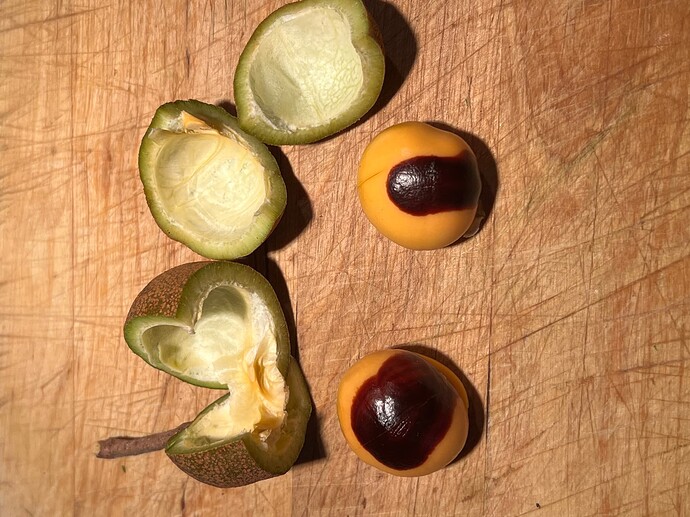In have no clue what this is. I just noticed it on the edge of my property. Is this something poisonous or edible. Its loaded with berries but I’m not tasting one until I know it won’t kill me.
After a little googling could this be chokecherry?
I bet there is someone here that would know if that’s a chokecherry, I can’t think who to tag though, one of the folks that forage for wild fruit should know , maybe @wildforager
Based on the leaf I now think its buckthorn. Needless to say I’m not eating it. Lol
Is this a match?Tatarian Honeysuckle. Brady
In Russia we call similar berry as Wolfberry, it is supposed to be poisonous and we do not eat it.
Goodness. I’m confused now. After thinking it might be buckthorn the berries don’t match. Leaves look similar. The berries match your link well Brady. I unfortunately didn’t notice any bloom this spring. This is the most representative picture I have.
The buckthorn photos I saw had a mixture of red and black berries but it my depend on the time of year
Although it may certainly exist elsewhere, I’ve never seen bright red choke cherries here in the northeast. They are usually purple/black when ripe and hang in bigger clusters than pictures above. Not sure what it is but I generally avoid red berries for foraging (wild raspberries excepted) as they are more likely to be trouble than black/purple berries
Definitely not chokecherry, but I don’t know what it could be. Don’t eat it without knowing!
Its Honeysuckle. Remove it and burn the evidence or it will be a nuisance
Lonicera xylosteum. It is native plant in eastern Europe and Siberia. Often is used as an ornamental in cities. The berries can be different colors. The berries are not eaten by humans, I am not sure if they are poisonous or just taste bad. Never even tried to eat any as a kid because of the scary name. The flowers are a good source of nectar and pollen for bees. It is introduced in US and considered to be invasive.
After reading the above links I agree it is invasive honeysuckle. Ill cut it out asap. Surprised I never noticed it before.
Bumping this……
On the first post, yes that is bush honeysuckle. It was a common ornamental on farm sites in ND. It was tough enough to handle the hot dry summers and cold winters. Up there it wasn’t invasive. Not many things were. We were always told it was poisonus. I don’t know if it was. It seems like birds stayed away from it.
Bush honeysuckle is the most invasive plant that has ever invaded middle Tennessee. Worse than kudzu. I have not tasted the berries, but I have read they are very bitter. Birds certainly eat them and spread the joy. There are probably billions of them along roadsides here now. I blame them for making it very difficult to find black raspberries anymore. They even out compete the swamp privet for roadside dominance. If one could graft honeyberry onto them, then maybe they would have some value.
Yes, buckeye.
Thanks. I’m guessing it just wasn’t mature enough to be brown yet. It just came off a foot tall bush with no leaves on it—our drought has killed a lot of stuff.







